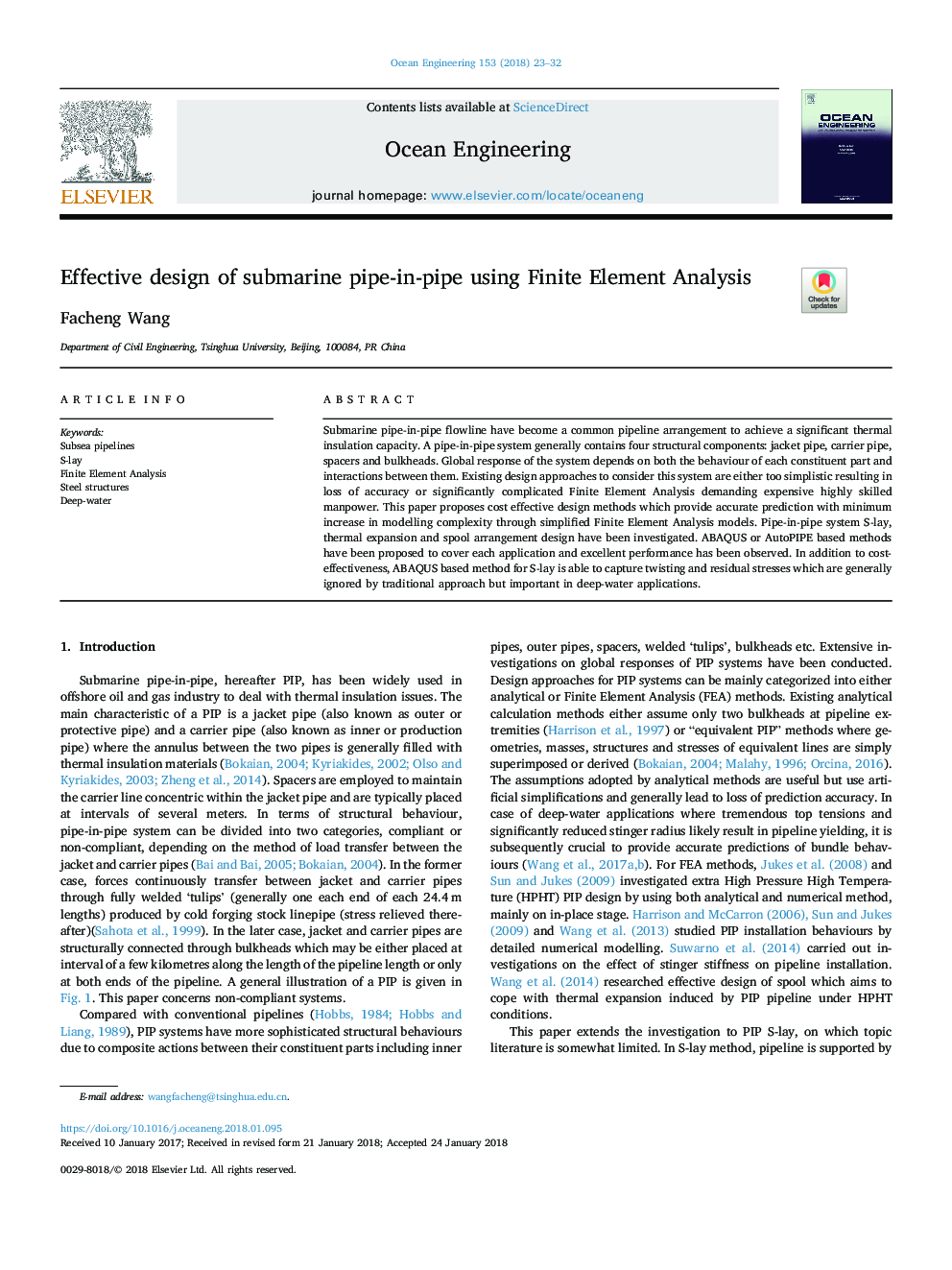| Article ID | Journal | Published Year | Pages | File Type |
|---|---|---|---|---|
| 8062992 | Ocean Engineering | 2018 | 10 Pages |
Abstract
Submarine pipe-in-pipe flowline have become a common pipeline arrangement to achieve a significant thermal insulation capacity. A pipe-in-pipe system generally contains four structural components: jacket pipe, carrier pipe, spacers and bulkheads. Global response of the system depends on both the behaviour of each constituent part and interactions between them. Existing design approaches to consider this system are either too simplistic resulting in loss of accuracy or significantly complicated Finite Element Analysis demanding expensive highly skilled manpower. This paper proposes cost effective design methods which provide accurate prediction with minimum increase in modelling complexity through simplified Finite Element Analysis models. Pipe-in-pipe system S-lay, thermal expansion and spool arrangement design have been investigated. ABAQUS or AutoPIPE based methods have been proposed to cover each application and excellent performance has been observed. In addition to cost-effectiveness, ABAQUS based method for S-lay is able to capture twisting and residual stresses which are generally ignored by traditional approach but important in deep-water applications.
Related Topics
Physical Sciences and Engineering
Engineering
Ocean Engineering
Authors
Facheng Wang,
